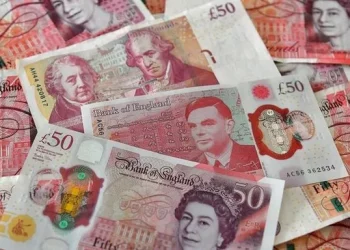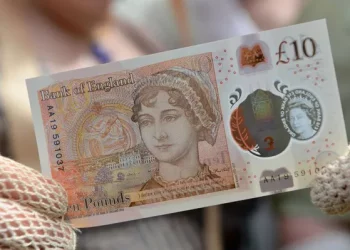Foreign exchange (forex) trading involves the conversion of one currency into another. Among the most commonly traded currencies are the Canadian Dollar (CAD) and the Euro (EUR). As a forex trader or someone interested in currency exchange, it’s crucial to understand how to calculate and interpret currency conversions, especially when dealing with significant amounts like 2,000 CAD.
In this article, we will explore the process of converting 2,000 CAD to Euros. We’ll also discuss the factors that affect exchange rates, provide a step-by-step guide for currency conversion, and explain the key considerations you need to keep in mind when engaging in forex trading. Whether you’re trading in the forex market or simply need to make a personal transaction, this guide will give you a solid understanding of how 2,000 CAD translates into Euros.
1. Understanding Exchange Rates
Before delving into the specifics of converting 2,000 CAD to EUR, it’s important to grasp the concept of exchange rates. An exchange rate is the value of one currency expressed in terms of another. For example, if the exchange rate between CAD and EUR is 0.68, this means that 1 Canadian Dollar is equivalent to 0.68 Euros.
Exchange rates fluctuate based on a variety of factors, including supply and demand for a currency, geopolitical events, economic data, and central bank policies. Forex traders closely monitor these fluctuations, as even small changes can impact profits or losses.
2. How Much is 2,000 CAD in Euros?
To convert 2,000 Canadian Dollars into Euros, you need to know the current exchange rate between CAD and EUR. Exchange rates change constantly, influenced by factors such as:
Interest Rates: When a country raises its interest rates, its currency often strengthens, making it more expensive to convert into other currencies.
Economic Performance: Strong economic data, such as GDP growth, can boost a country’s currency.
Market Sentiment: Speculation, geopolitical events, or shifts in investor confidence can lead to sharp changes in exchange rates.
Trade Balances: Countries with trade surpluses tend to have stronger currencies due to increased demand for their goods and services.
Let’s assume that the current exchange rate for CAD to EUR is 0.68. This means that for every 1 Canadian Dollar, you would receive 0.68 Euros.
To calculate how much 2,000 CAD would be worth in Euros, you would multiply the amount in CAD by the exchange rate:
2,000 CAD×0.68 EUR/CAD=1,360 EUR
Therefore, 2,000 Canadian Dollars would be worth approximately 1,360 Euros at an exchange rate of 0.68.
3. Factors Influencing CAD to EUR Exchange Rate
While we’ve used an example exchange rate of 0.68 in the previous calculation, it’s important to recognize that the actual exchange rate may differ. As mentioned earlier, exchange rates are influenced by a range of economic and political factors. Let’s take a deeper look at some of the primary drivers:
Economic Conditions
The economic health of both Canada and the Eurozone plays a significant role in determining the CAD/EUR exchange rate. For example:
Canada’s Economic Outlook: Canada is known for its rich natural resources, including oil and minerals. Fluctuations in commodity prices, especially crude oil, can impact the Canadian economy and, in turn, the CAD. A stronger Canadian economy, driven by rising oil prices, can lead to a stronger CAD relative to the Euro.
Eurozone Stability: The Eurozone, consisting of multiple countries, often faces challenges such as fiscal imbalances, political tensions, and debt crises. Any signs of instability or economic downturns in key Eurozone countries, such as Germany or France, can affect the strength of the Euro relative to the CAD.
Central Bank Policies
Both the Bank of Canada (BoC) and the European Central Bank (ECB) have a profound influence on the exchange rate. Central banks use monetary policy tools like interest rates and quantitative easing (QE) to manage their respective economies.
Bank of Canada: When the BoC raises interest rates, the Canadian Dollar often appreciates due to higher returns on Canadian assets, attracting investment from foreign traders. Conversely, a rate cut may weaken the CAD.
European Central Bank: Similarly, the ECB’s actions can influence the value of the Euro. A tightening of monetary policy or an increase in interest rates by the ECB could strengthen the Euro, while loose monetary policy and low interest rates could weaken it.
Global Market Sentiment
Global market sentiment and investor appetite for risk can also affect currency exchange rates. In times of global uncertainty or economic instability, investors tend to flock to “safe-haven” currencies like the US Dollar (USD) or the Euro, which can strengthen these currencies and weaken others, including the CAD. Conversely, during periods of economic growth and stability, riskier currencies like the Canadian Dollar may appreciate.
Trade and Current Account Balances
A country’s trade balance — the difference between the value of its exports and imports — can also impact its currency. Canada, as a major exporter of oil, often sees its currency strengthen when global oil prices rise, as the country’s export revenues increase. Conversely, if the Eurozone experiences strong trade surpluses, the Euro could strengthen relative to the CAD.
4. How to Convert CAD to EUR for Forex Trading
For forex traders, understanding how to convert CAD to EUR is essential for making informed decisions in the market. Traders typically buy and sell currencies based on predictions about future exchange rate movements. To convert currencies for trading, you’ll need to:
Check the Live Exchange Rate
Before executing a trade, forex traders should always check the live exchange rate for CAD to EUR. This can be done using an online currency converter, financial news websites, or trading platforms. Real-time data is essential for making precise calculations and executing timely trades.
Factor in Transaction Costs
When converting currencies in the forex market, there are transaction costs to consider. These costs can vary depending on the broker or platform you use. Brokers may charge a spread (the difference between the buy and sell price) or impose a flat commission on each trade. These fees can impact the profitability of a trade, especially when converting larger sums like 2,000 CAD.
Execute the Trade
Once you’ve checked the exchange rate and considered any fees or commissions, you can execute the trade. If you expect the Euro to strengthen relative to the Canadian Dollar, you might decide to buy Euros (going long EUR). On the other hand, if you expect the Canadian Dollar to strengthen, you could sell Euros (going short EUR).
Monitor the Market
After executing your trade, it’s crucial to monitor the market closely. Currency exchange rates can be volatile, and changes in economic data, geopolitical events, or central bank announcements can lead to rapid shifts in exchange rates. By staying informed, you can adjust your strategy accordingly to maximize profit or minimize losses.
5. Alternatives for Converting 2,000 CAD to EUR
If you’re not a forex trader but need to convert 2,000 CAD into Euros for personal use, you have several options. Here are a few of the most common methods:
Online Currency Exchange Services
Several online platforms offer currency exchange services, allowing you to convert CAD to EUR at competitive rates. Popular services include TransferWise (now Wise), Revolut, and CurrencyFair. These services often provide better rates than banks and traditional exchange kiosks, and they typically have lower fees.
Banks and Currency Exchange Counters
If you prefer to conduct the conversion in person, you can visit a bank or currency exchange counter. While convenient, banks may offer less favorable exchange rates and charge higher fees than online platforms. It’s always a good idea to shop around and compare rates before making a decision.
ATMs and International Transfers
If you’re traveling, ATMs may provide a convenient way to withdraw Euros directly from your Canadian bank account. However, be mindful of foreign withdrawal fees and exchange rate markups that may apply. For international transfers, services like PayPal, Western Union, and others may offer convenient ways to send money abroad, though fees can vary.
Conclusion
Converting 2,000 CAD to Euros requires a solid understanding of exchange rates and the factors that influence them. Whether you’re trading currencies in the forex market or making a personal transaction, knowing how to calculate and monitor exchange rates will help you make informed decisions.
In the world of forex trading, the value of CAD relative to the Euro can fluctuate significantly due to economic conditions, central bank policies, and global market sentiment. As such, forex traders need to stay updated on the latest market developments to make profitable trades.
If you’re simply converting CAD to Euros for personal use, be sure to compare different exchange platforms and consider the costs involved to ensure you get the best value for your money. With the right knowledge and tools, converting CAD to EUR can be a straightforward process, whether you’re a seasoned forex trader or a casual traveler.
Related Topics:

























